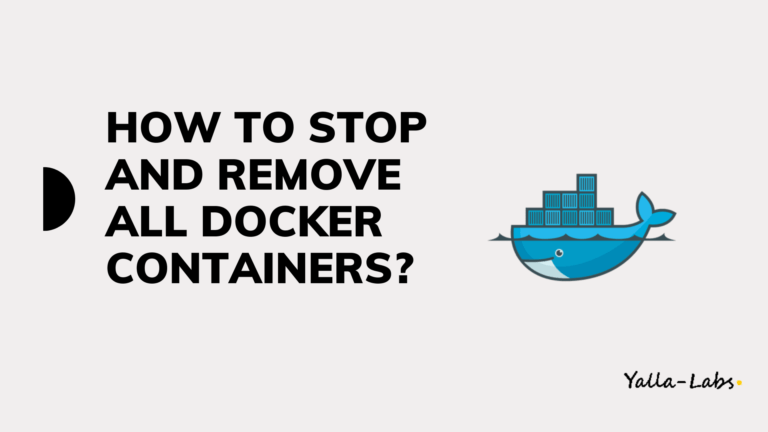
That’s because one of them isn’t currently running. If you drop the a, you only see three containers: You can combine the two arguments after a single dash ( -). The -aq option tells docker ps to list all containers ( -a) by container ID ( -q). Here’s a screenshot of a system with four containers: The first part of the command lists all of the containers on the system. How does this command work? Let’s take a closer look. $ docker ps -aq | xargs docker stop | xargs docker rm Here’s a command that will stop and remove all of the containers on your system, assuming the user running it is root or a member of the docker group. Stopping and Removing All Containers For the Impatient You’ll need to have Docker installed, as well as docker-compose.
#Quit all docker instances windows#
These examples will be for systems that use Docker’s shell-based tools, including macOS, Linux, and Windows with WSL. Then, we’ll look at Docker Compose, another tool that makes managing smaller collections of containers easier. We’ll focus on stopping and removing containers.

#Quit all docker instances how to#
Let’s look at how to make the Docker command line easier to use. And stopping and removing 10 containers is-well, you get the idea. Stopping and removing two containers is four. Stopping and removing a container from the command line takes two steps. Managing containers from the command line can be painful, but setting up an orchestration tool like Kubernetes or Docker Swarm is overkill for smaller systems. But as containers proliferate, controlling them gets more complicated, too. You can run almost any application with a single command and customize it for your environment via a consistent container-based interface. Because once containers stopped you may not have an easy way to generate the list of same containers to restart.It’s an understatement to say that Docker is a game-changer for systems engineers and developers. IMPORTANT: make sure you double-check what you’re doing! Specifically, run docker ps -q, compare it to docker ps, this kind of thing. What we can do now is pass the result of this command as the parameter for the docker stop command: :~ # docker stop $(docker ps -q)Īnd just to check, running docker ps now won’t show any running containers: :~ # docker ps -q This also allows us to use a clever shell expansion trick: you can some other command, and pass its output to the docker stop container.įor instance, this shows us the list of all the IDs for currently running Docker containers: :~ # docker ps -q If there’s more than one container, just use space as a delimiter between container names or IDs. If I ever decide to stop both nginx and db together, I can do it like this: :~ # docker stop nginx dbĪs you can see from previous examples, docker stop simply takes a list of containers to stop. Here’s the info on the db container: :~ # docker ps -f name=dbĬ745794419a9 mariadb:latest "docker-entrypoint.s…" 9 months ago Up 4 seconds 3306/tcp db Since I also have a MariaDB container named db, I might need stop it together with nginx. … or like that: :~ # docker stop 32cd3e477546ģ2cd3e477546 Docker: Stop Multiple Containers You need to use a container name or container ID with the docker stop command.įor example, I have an nginx load balancer container: :~ # docker ps -f name=nginxĬONTAINER ID IMAGE COMMAND CREATED STATUS PORTS NAMESģ2cd3e477546 nginx:latest "nginx -g 'daemon of…" 11 months ago Up About a minute 0.0.0.0:80->80/tcp, 0.0.0.0:443->443/tcp nginxīased on this output, I can stop my nginx container like this: :~ # docker stop nginx

I’m going to show you one of the possible ways. Quite often, you need to stop all of the currently running containers. Now and then, especially when working on a development environment, you need to stop multiple Docker containers.


 0 kommentar(er)
0 kommentar(er)
